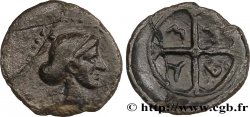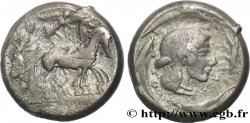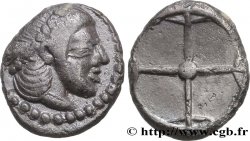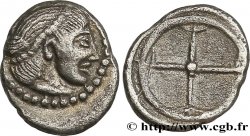bgr_976975 - SICILY - SYRACUSE Obole
1 800.00 €(Approx. 2034.00$ | 1548.00£)
Quantity
Add to your cart

Type : Obole
Date: c. 470-460 AC.
Mint name / Town : Syracuse, Sicile
Metal : silver
Diameter : 10 mm
Orientation dies : 12 h.
Weight : 0,59 g.
Rarity : R2
Coments on the condition:
Superbe exemplaire sur un flan idéalement centré des deux côtés. Très beau portrait au droit ainsi qu’un revers bien venu à la frappe. Jolie patine grise de collection
Catalogue references :
Predigree :
Exemplaire provenant de la collection du docteur B. Odaert et de la vente Nomos, Obolos 26, lot n° 39 (18/12/2022)
Obverse
Obverse legend : ANÉPIGRAPHE.
Obverse description : Tête féminine à droite avec un cordon perlé dans les cheveux et un collier ; une partie de la chevelure tombant sur la nuque ; grènetis circulaire.
Reverse
Reverse legend : ANÉPIGRAPHE.
Reverse description : Roue à quatre rayons avec un moyeu central.
Reverse legend : S/U/R/A
Commentary
Il s’agit bien d’une obole et pas d’une litra. Ce type pourrait avoir inspiré le monnayage primitif de Massalia (Marseille) à la roue avec les oboles au Lacydon (voir MONNAIES XV, n° 48). Le revers servira de modèle à la litra à la tête casquée (cf. MONNAIES XV, n° 46). Exemplaire provenant de la série du Demaretion du fait de la présence d’une couronne sur la tête de la nymphe.








 Report a mistake
Report a mistake Print the page
Print the page Share my selection
Share my selection Ask a question
Ask a question Consign / sell
Consign / sell
 Full data
Full data









